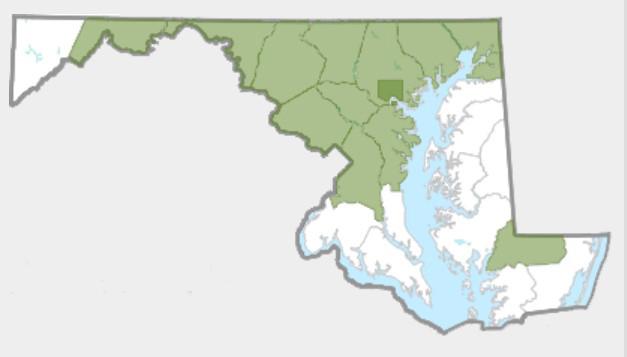We continue our look at invasive thistles in Maryland by turning the spotlight on Musk Thistle ( Carduus nutans) for this issue. The plant is also known as “nodding thistle,” due to the size of the flowers that tend to droop over on the stalk. Like Canada thistle, musk thistle is a species that was introduced from its native range in Europe and Asia to a wide variety of environments around the world, although apparently it was brought to the United States accidently in the early 1900s. It can now be found as far afield from its natural range as Tasmania in Australia and Alberta, Canada in North America. It is widely reported in the western United States and is considered a noxious weeds in states such as Minnesota and Wisconsin. In the mid-Atlantic area, it is found along the I-95 corridor from South Carolina to New York, with additional reports along the western shore of the Chesapeake Bay in Virginia and in southern Pennsylvania. The Maryland Biodiversity Project reports it can be found in most of the central and western counties, with the exception of Garrett in the west, and east of the Bay in only in Cecil and Wicomico counties. See the map below.

What is it?
Musk thistle is one of four thistles in Maryland that the state Department of Agriculture (MDA) considers noxious weeds. Although the MDA contends that musk thistle is now “under complete biological control,” the invasive continues to be found in many locations across the state. It is most often found in disturbed sites, such as former agricultural lands and roadsides, and can be particularly challenging in areas that are newly planted with tree seedlings. It can spread rapidly due to its high seed production (up to 120,000 straw-colored seeds per plant) and can crowd out native species. It requires mostly open and sunny locations with average moisture; it will not grow well in excessively wet or dry areas. However, it has been known to colonize areas subject to natural disturbances, such as areas where frequent flooding occurs.
How does it spread?
This invasive spreads primarily via seed production and by the wind. The number of seedheads per plant will vary by location, with a single plant able to produce more than two dozen in the most favorable conditions. Each flower head may contain over a thousand seeds that are light enough that they can be windblown for miles. Additionally, seeds may be viable in the soil for over ten years.
How can I identify it?
Musk thistle is an invasive biennial plant, which means individual plants grow for two years. The first year, it grows as a rosette that can reach four feet in diameter. The plant overwinters in the rosette stage and then in the spring of the second year, they grow multi-branched vertical stems that can reach 6 feet in height by mid-summer. Leaves are dark green, coarsely lobed, and have a smooth, waxy surface with a distinctive white midrib. Flowers begin to emerge in May and will continue into July. The flowers last about a month with seed production and dissemination following. Individual plants die at the end of the second year.
See the photo gallery below.
How can I control it?
The best means of control is to remove or kill the plant in the rosette stage. Hand pulling is most effective on small populations year round, but should be completed before seed production. Foliar chemical applications of broadleaf herbicides during the rosette stage or prior to flowering has also been effective. Mowing during the rosette stage can prevent the plant from going to seed.
For more information:
Learn more about musk thistle:
Musk thistle, nodding thistle - Invasive Plant Atlas of the United States
Invasive Plants in Pennsylvania: Musk Thistle - Pennsylvania Dept. of Conservation and Natural Resources
Carduus nutans –Global Invasive Species Database
